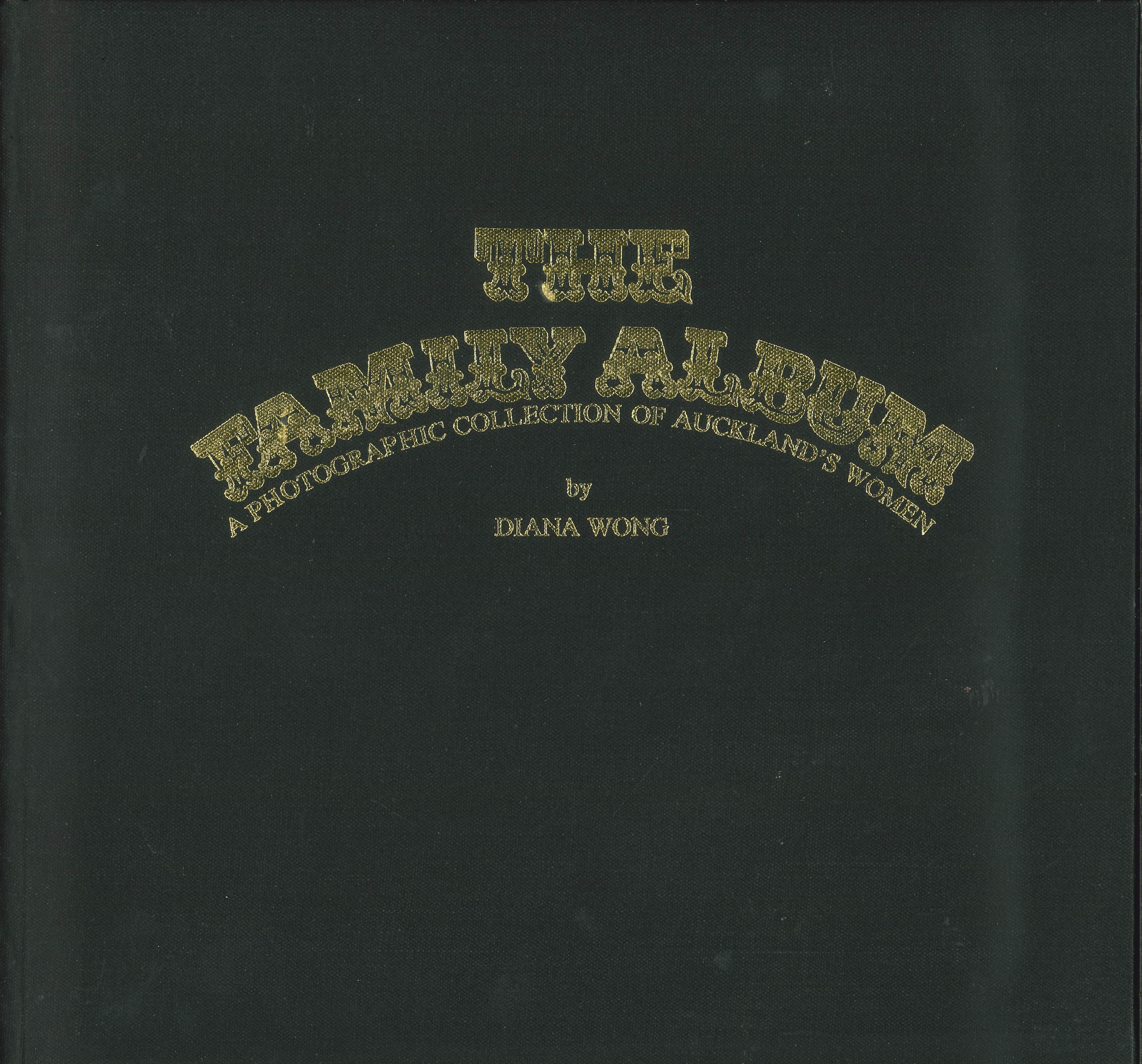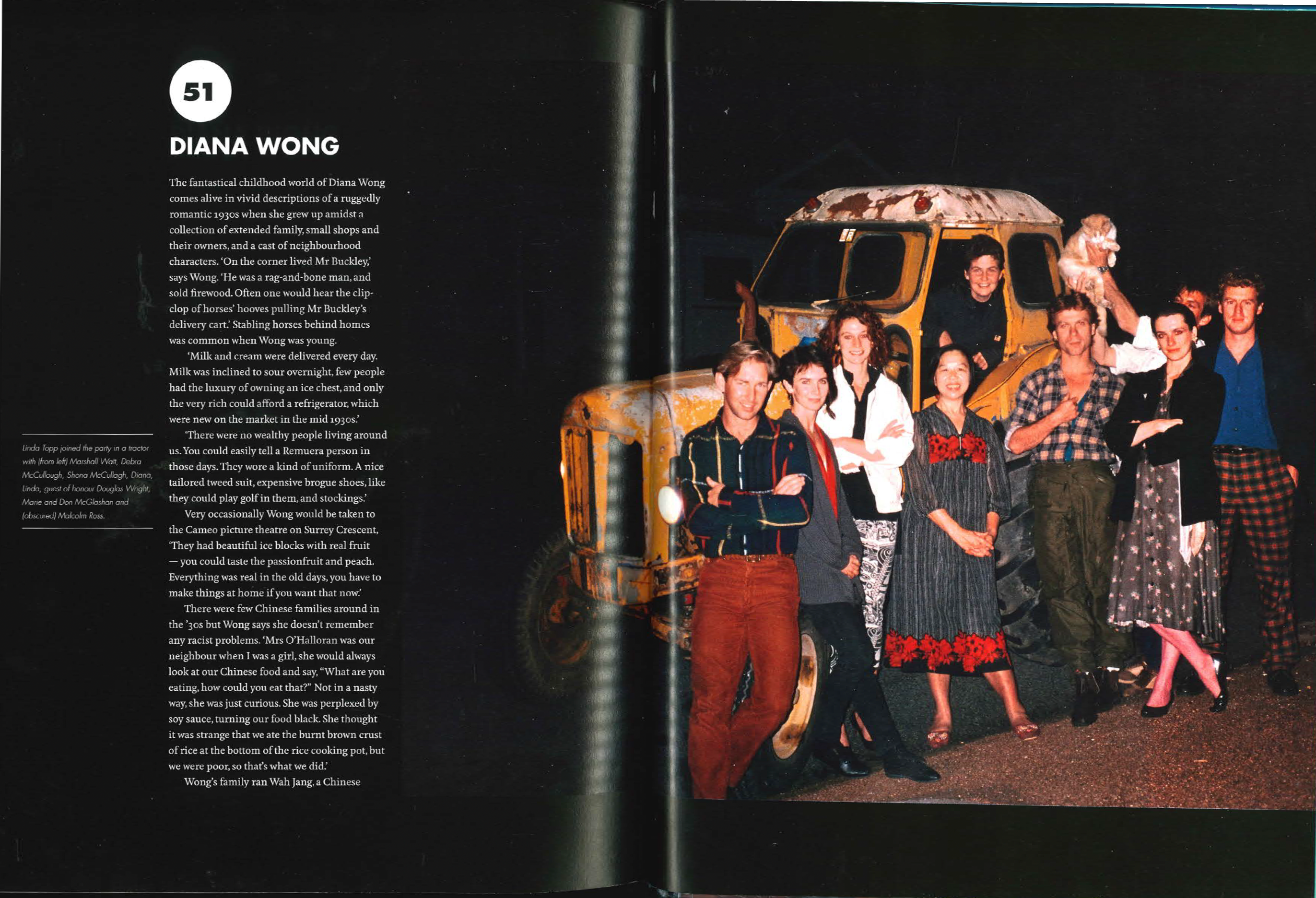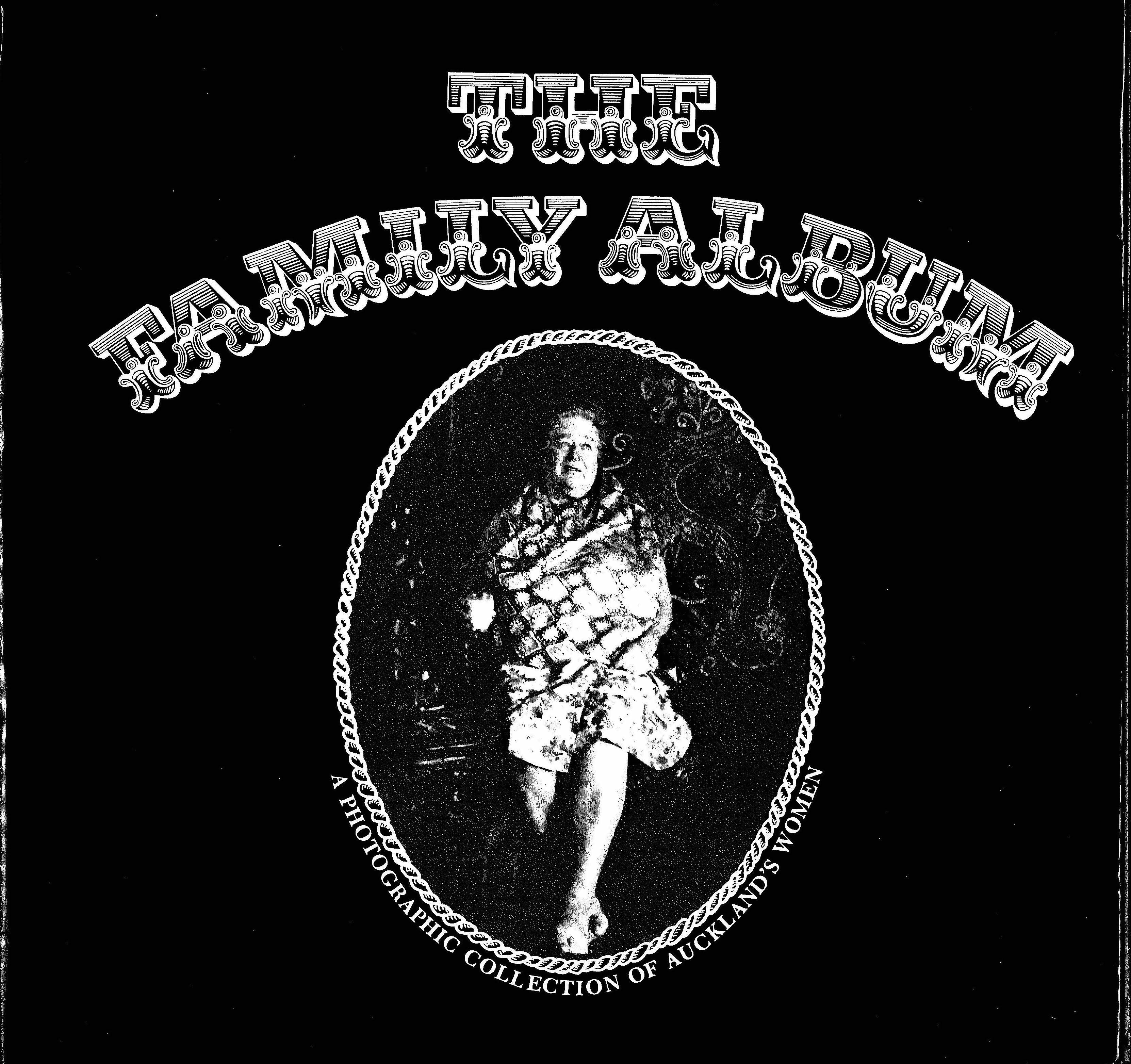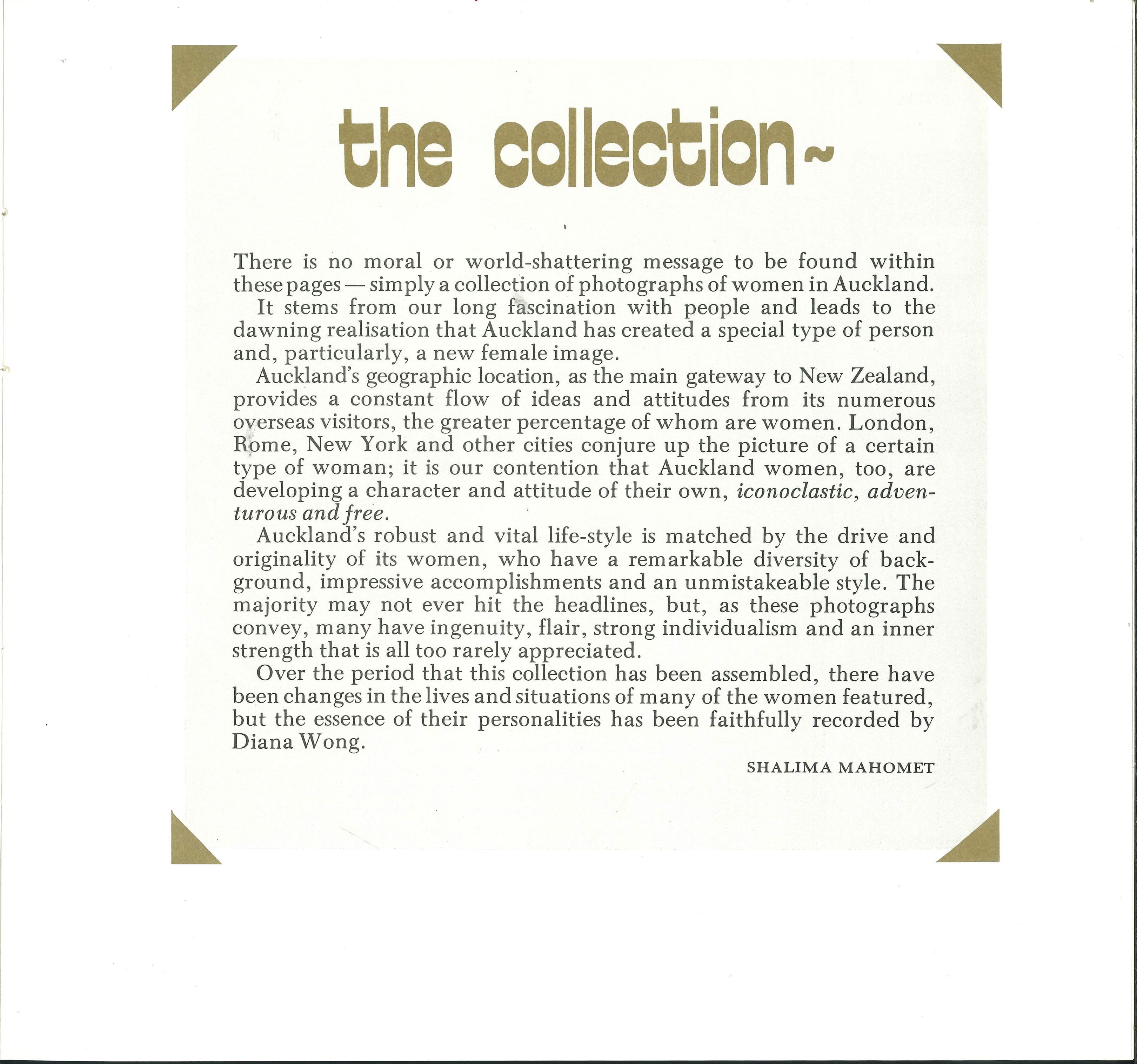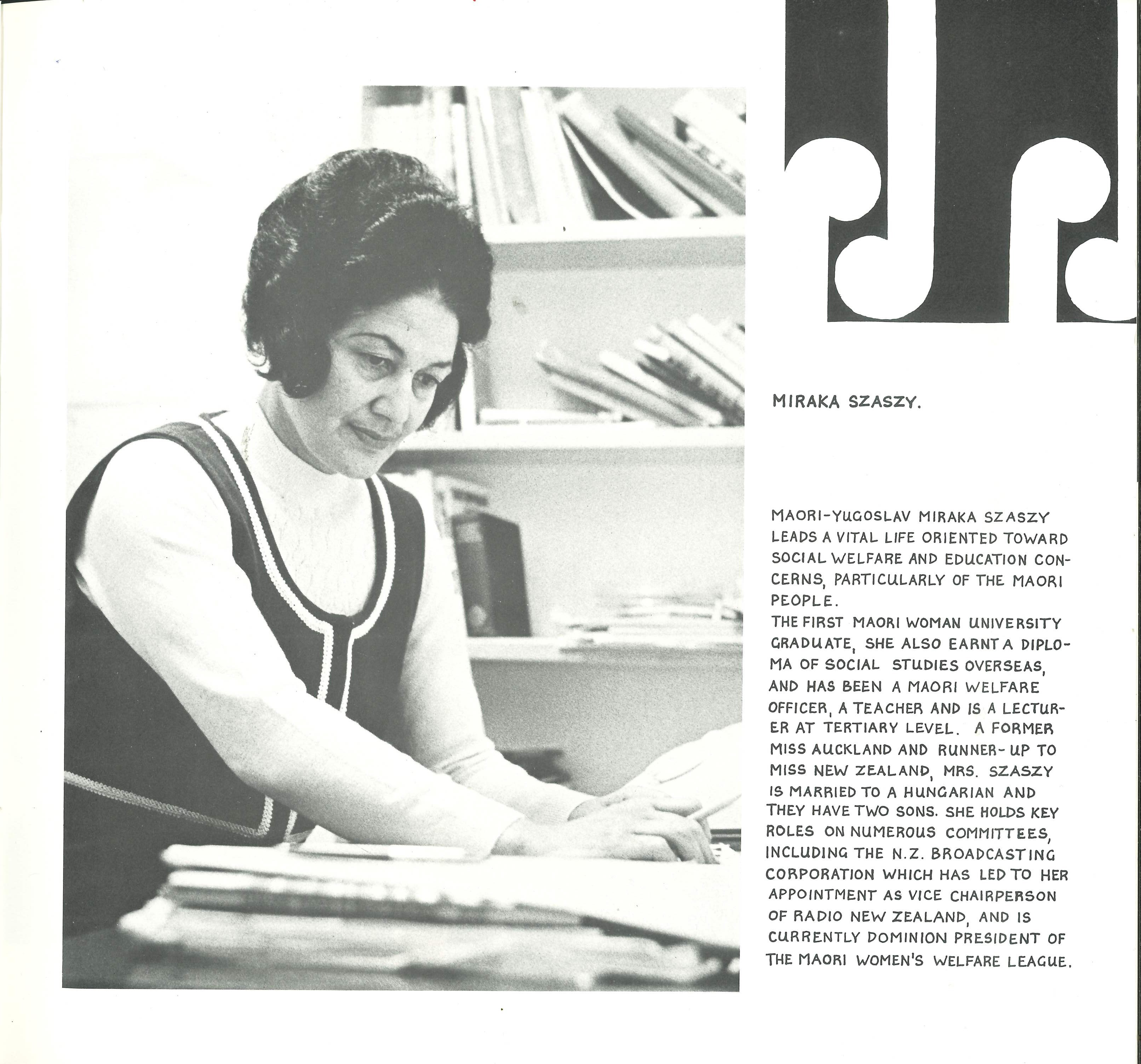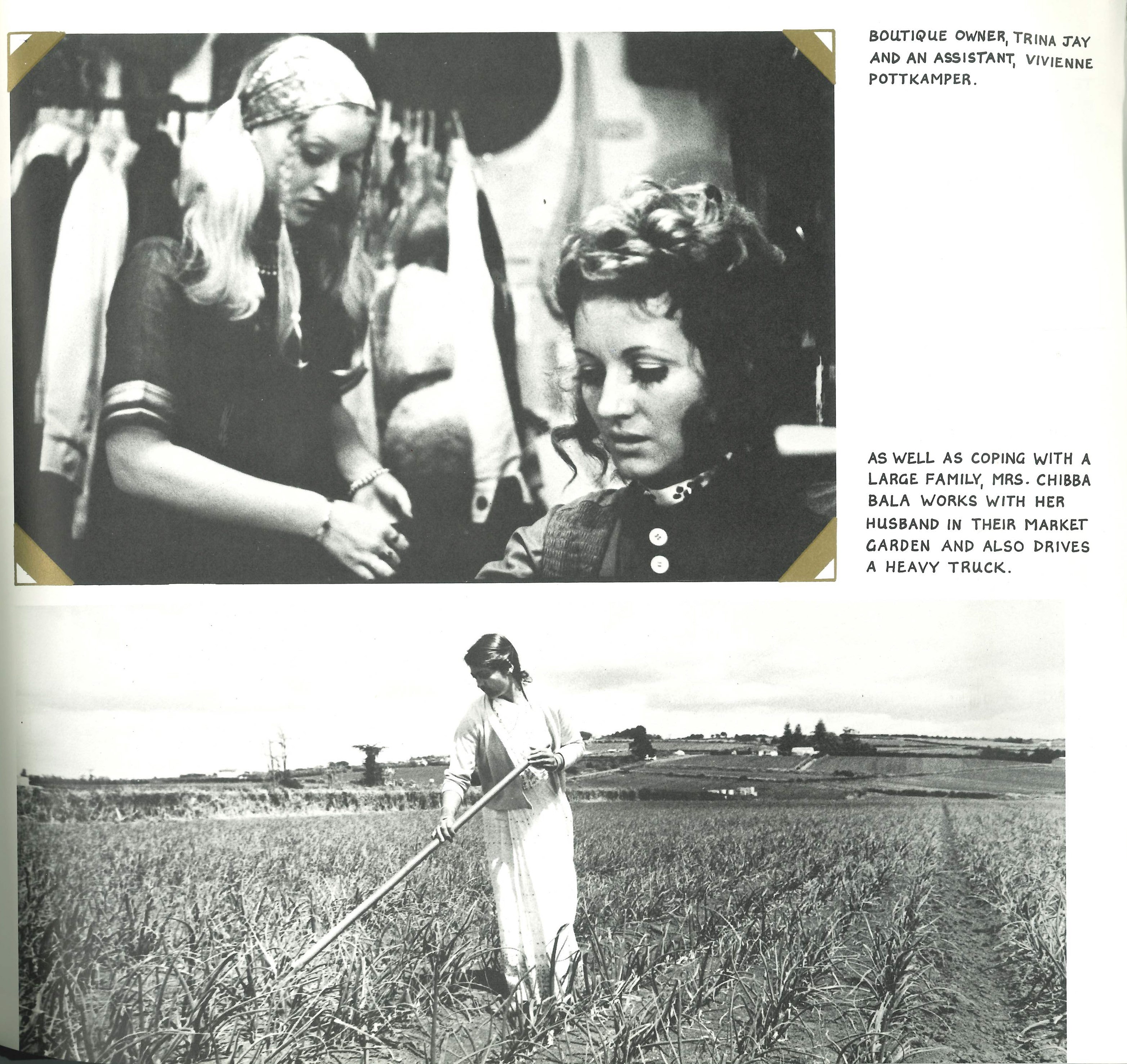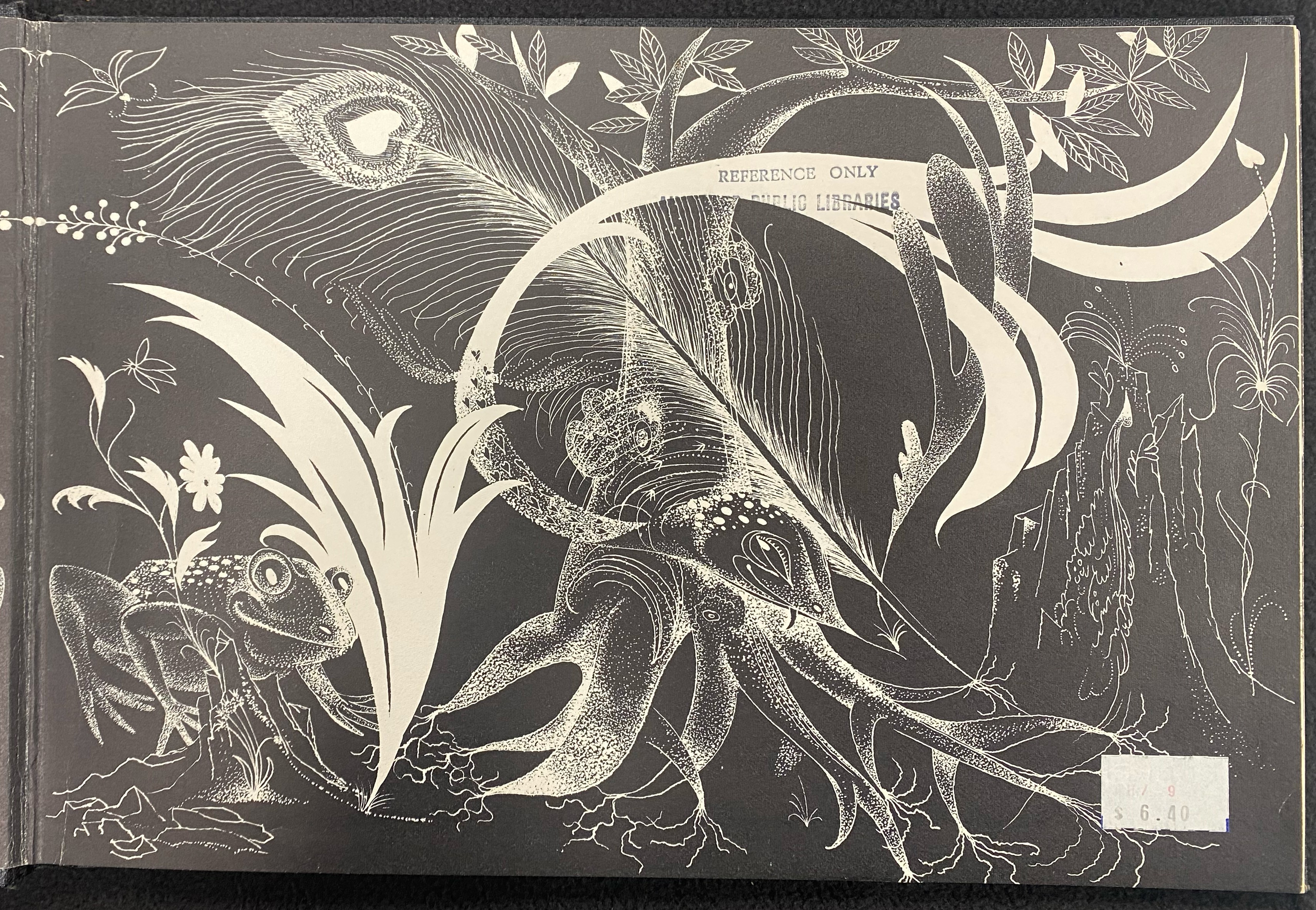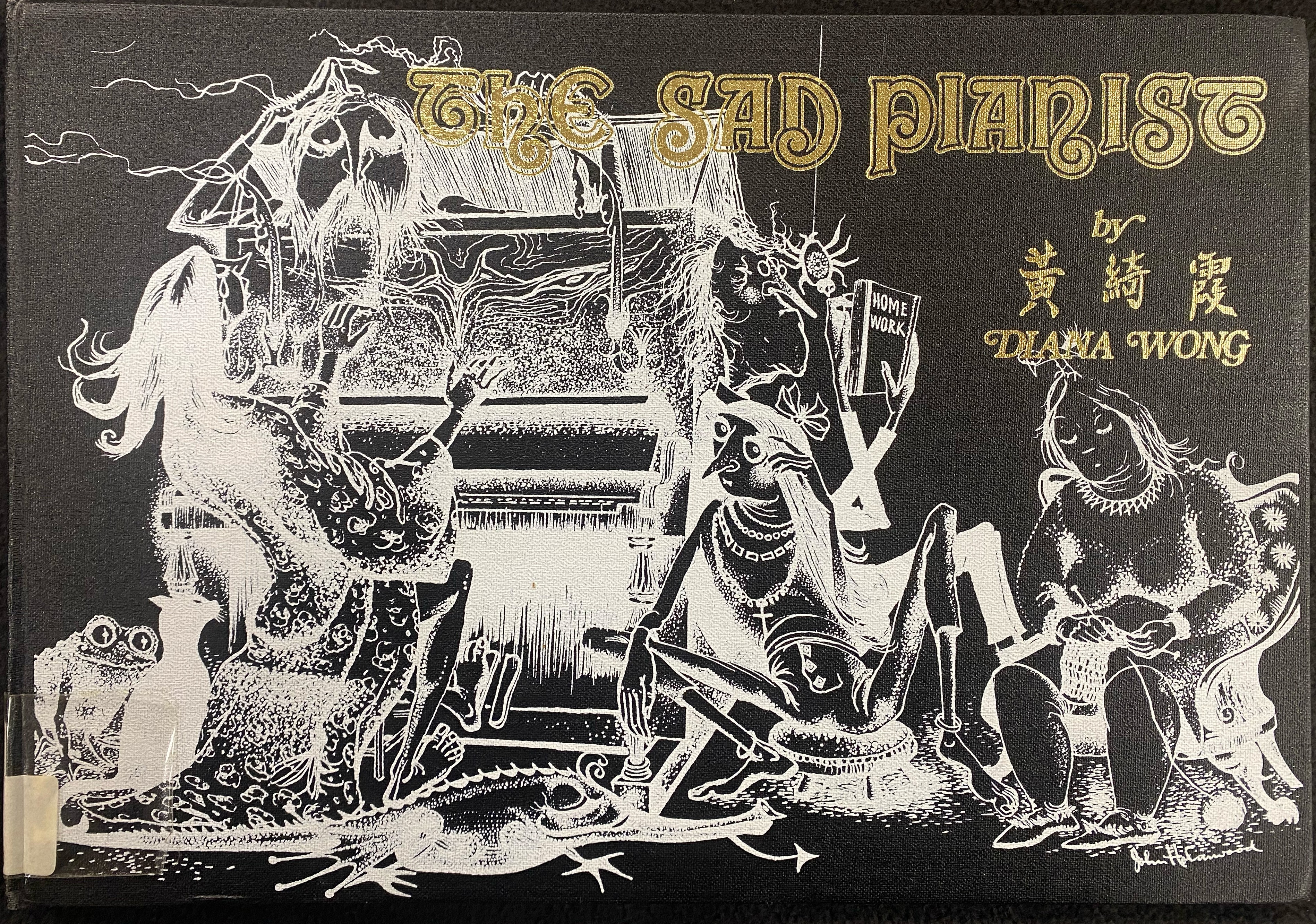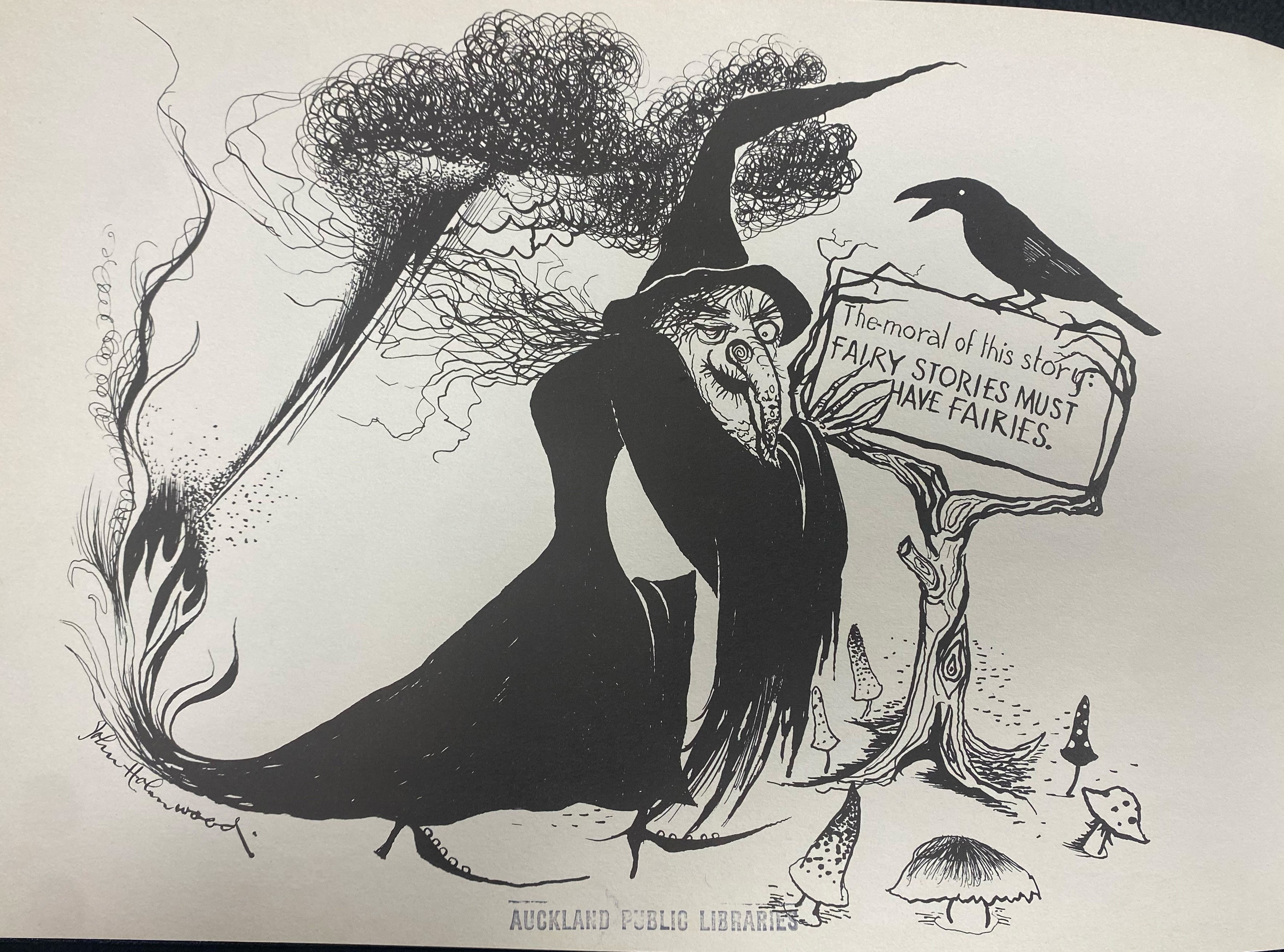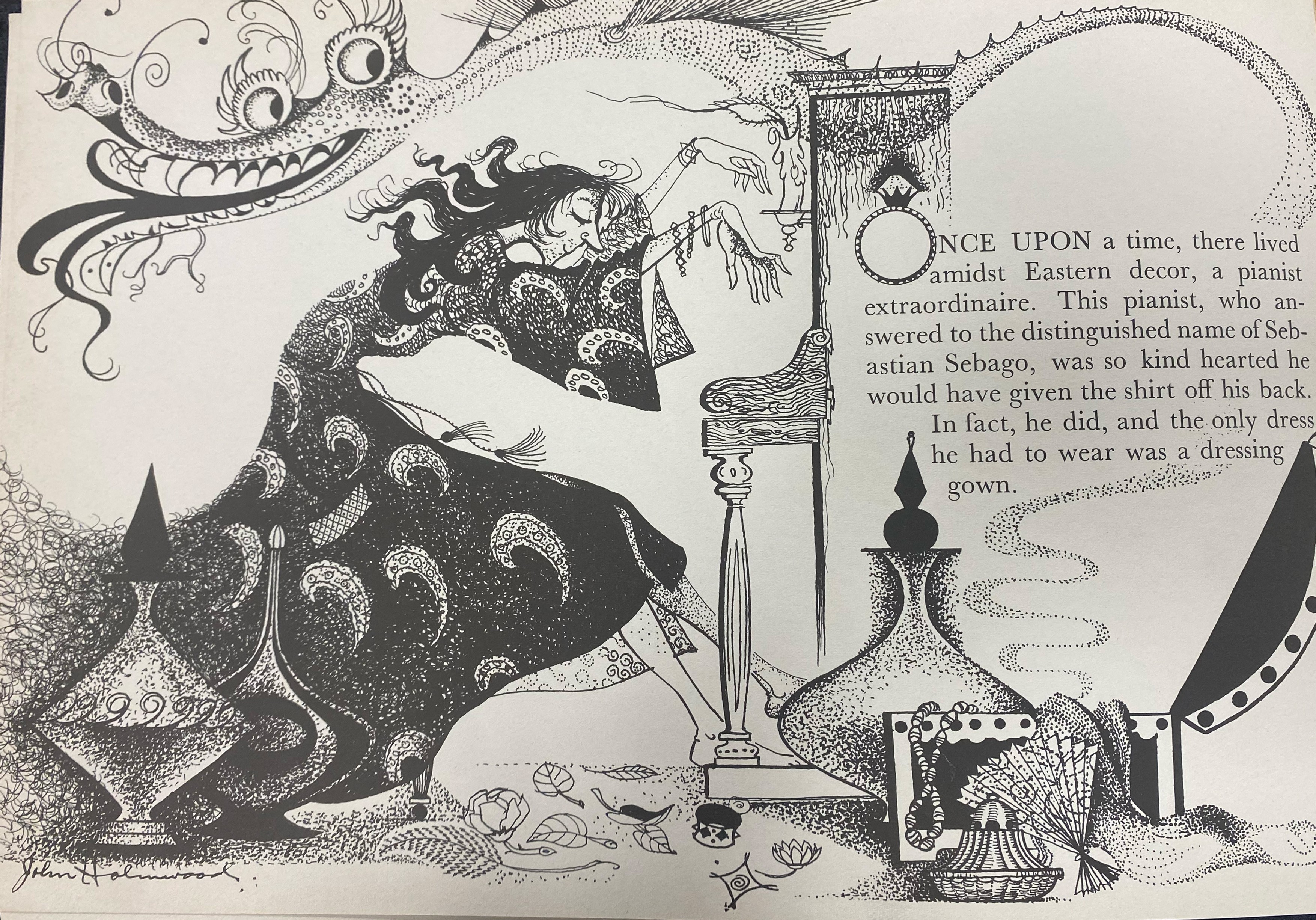INFO
| Name | Diana Wong (she/her) |
| Born | 1933 |
| Country of Birth | Aotearoa |
| Place of Residence | Tāmaki Makaurau Auckland |
| Ethnicities | Chinese (Cantonese) |
| Artform | Screen, Photography |
| Decades Active | 1960s, 1970s, 1980s, 1990s, 2000s, 2010s, 2020s |
ABOUT
Diana Wong is a fourth-generation Chinese New Zealand artist, writer, filmmaker and former clerical worker, based in Tāmaki Makaurau. She has lived in Grey Lynn all her life, living in the same house that she was born in. Wong did not pursue a career in the arts, but her home is a homage to her artistic pursuits and the creative innovators she surrounded herself with. Her open-mindedness led her to pursue projects that captured the varied and vivid characters that she came across in Tāmaki Makaurau who inspired her playful style of storytelling.
Wong’s family ran Wah Jang, a produce store on 31 Queen Street in Tāmaki Makaurau, founded in 1913 by her grandfather Wong Yee Chong (or Wong Yi Cheung) and his business partner, Henry Chin (also known as Chan Gau). After Wong’s mother and father were married in China, they moved back to Aotearoa and lived above her mother’s foster father’s produce shop in Newmarket. They eventually needed more space and, in 1928, her grandfather bought, for £200, the Grey Lynn bungalow where Wong was born five years later. In the late 1930s, Wong’s immediate family moved to College Hill to live above their produce shop, where they stayed for 15 years until her grandparents relocated to Onehunga, at which time her family moved back to the house in Grey Lynn, where Wong has stayed ever since. She now shares her property with many pet turtles who live in the large ponds she has built in her garden. Creativity ran in Wong’s family; her grandfather was a self-taught landscape painter and her sister worked in fashion.
On a trip to Hong Kong in 1960, Wong was asked by her cousin to buy him a camera. Since they were so cheap, she decided to also buy one for herself. The artist Kristin Zambucka, a friend of Wong, encouraged her to take photographs with the camera. Continuing with her exploration of lens-based practice, she borrowed a film camera from her sister and used it to capture moving-image films. She went on to create two short films, the first of which was Heartbreaks of Hollywood (1961), which follows Clorogene Jones, who leaves her hometown for Los Angeles to pursue her dreams of being famous. She quickly finds fame, but simultaneously meets a cast of lecherous and envious people. She realises the people she trusted in Hollywood were not her friends and tries to return home. The first half of the script was written by Zambucka, and Wong completed it and shot the film. It was filmed in Tāmaki Makaurau, with some scenes taking place on the steps of the Auckland Museum. With the help of her friends, Wong premiered the film in a hall on Hobson Street the following year, attending the event in a red dress that she made herself.
In the early 1960’s she wrote the story for her second film, The Sad Pianist, which was filmed in 1973. The short was captured on 8mm colour film and featured the pianist Billie Farnell as the main character. Wong noted that she wrote the character of the sad pianist “based on Billie. It’s a take on Billie, but of course I’ve emphasised his life in different ways.” The cast was made up of many of her friends and family members, including her young nieces and nephews. The story follows a pianist who finds himself in an unhappy relationship after wearing magical rose-tinted glasses. Once the spectacles are broken, he falls in love with a statue, who comes to life and marries the pianist. It is described as “costume dramedy with elements of farce, pantomime and burlesque.”
In the same year, she created a storybook adaptation of the film The Sad Pianist: A Grimm Fairy Tale For Grown-ups, which included the story, photographs by Wong, and illustrations by John Holmwood. The black and white large-format book playfully merges various visual forms together, using illustrations to frame the text and images, sometimes even overlapping. It reflected an aesthetic style prevalent in 1970s fairytale stories, utilising intricate, long-line drawing to create texture, expansive scenes, and sets of characters.
In 1975, Wong published The Family Album: A photographic collection of Auckland’s Women, a project that she was encouraged to pursue by her friend, Shalima Hinemoa Mahomet. This photobook is an extensive record of portraits of women taken by Wong throughout the city, capturing their multifaceted lives, hobbies, professions, cultural backgrounds, families, and interests. It includes women of many occupations, including nightclub singers, psychiatrists, archaeologists, farmers, equestrians, strippers, factory workers, actresses, activists, dancers, and many more. Each photo is annotated by Wong, including anecdotes about the place that these women hold in Aotearoa’s history and even has portraits of notable figures such as Dame Miraka Szászy, a young Sue Kedgley, and Dame Whina Cooper. The book’s focus on the character, backgrounds, and interests of these women captures the inquisitive and unprejudiced perspective from which Wong approached this project. On the same page, Wong places Christine Barnett, who “took to a stripping job when singing engagements were scarce”, and Mrs Tirikatene-Sullivan, “first Māori woman cabinet minister, speaking on the South African sporting contacts issue.”
In the book Mahomet says of Wong:
Diana ought to have been born seventy years ago as an adornment for the twenties — a period for which she has always had an affinity, long before it became trendy to be camp. The fads and aura of that era delight and fascinate her and visibly influence her interior decor projects and her exotic wardrobe. Everything Di does is vivid, original and amusing…
Always efficient and highly organized, it is easier to succumb to the Wong enthusiasm than to endeavour to resist it for rarely can she be deflected from her purpose, and with unusual tenacity and hard work she has successfully achieved seemingly impossible goals. Di has a strong sense of loyalty to her family and friends that surmounts the petty irritations and long separations that life sometimes entails.
Outside of her creative endeavours, she undertook clerical work to make a living. At home she embellishes objects and pictures with appliqué and beads, and even practices tap-dancing. The beaded lampshades that she created are colour-coordinated with the vintage fabric that she finds to cover the frames and adorn every room in her home.
Wong was known for hosting lavish parties. She had many friends who were artists, musicians, performers, and social activists like Freda Stark, Flora MacKenzie, and Carmen Rupe. In Peter Wells’ 2019 book Hello Darkness, he describes these gatherings:
I began to understand it was a form of salon des refuses - it was a gathering of people who didn't fit in the remorselessly conformist society of the 1950s and 1960s (like Diana herself, a highly articulate forthright Chinese woman)
The soirées included a woman who was Auckland's first woman taxi driver (exceptionally brave in the loutish 1960s); a well-known woman ventriloquist - there was always a sprinkle of red velvet and magic in the air; Freda, the survivor of a 1937 murder trial and lesbian scandal; her nephew, the highly camp pianist and conversationalist Billie Farnell.
In her living room, she has a wall of framed photographs that she took of these significant characters in Aotearoa’s history, which she jovially calls “the wall of shame, not the wall of fame”. Her house is filled with artefacts from her life from the 1930s onwards, and continues to be a haven for her artistic endeavours.
LINKS
Key works / presentations
Books:
1975 — The Family Album: A photographic collection of Auckland’s Women
1973 — The Sad Pianist: A Grimm Fairy Tale For Grown-ups
Films:
1973 — The Sad Pianist
1961 — Heartbreaks of Hollywood
